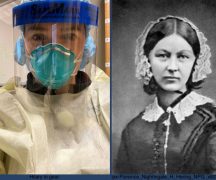The Ohio Department of Health’s data on the COVID-19 pandemic is accurate, according to a state audit released Tuesday after a nearly nine-month probe.
State Auditor Keith Faber launched a review of ODH data in July as fellow Republicans from President Donald Trump to then-Ohio House Speaker Larry Householder were accusing health officials, without evidence, of overhyping or somehow fraudulently producing COVID-19 data.
Faber’s office created an online portal seeking people with documentation that would suggest ODH is overcounting cases, like results for a test a person didn’t take. Auditors received 15 complete responses, some of which were errors from the local health department.
This week, Ohio recorded its one millionth known COVID-19 case.
“I can report that although inefficiencies, opportunities to improve transparency, and methods to collect better data certainly exist, the Ohio Department of Health has generally provided the public with correct information and managed Ohio’s response to the pandemic commendably,” Faber said in a news release.
The audit, which analyzed more than 850,000 rows of ODH COVID-19 data, alleged some small-scale errors, including:
- 1,363 cases — .2% of the caseload at the time — that auditors called “potential duplicate entries”
- 784 instances — .12% of the caseload at the time — where “probable” cases were mixed up with “confirmed” cases and vice versa.
- Unspecified number of instances where anomalies, like a hospitalization date prior to the onset of symptoms date, appeared in the data set.
ODH Director Stephanie McCloud responded to the audit in a March 16 letter highlighting the meager error rate captured in the 92-page audit.
“ODH notes that while every complaint of this type was and should be taken seriously, the overall number of complaints received with supporting documentation is very small,” she said. “Despite perceived limitations on data access, your team identified very few potential duplicate entries (.2%) and potential misclassifications of confirmed or probable cases.”
The audit is perhaps more significant for the problems it missed than those it found.
Last month, ODH announced it identified an internal systems failure reconciling two separate databases (death certificates and infectious disease systems) that track COVID-19 deaths. The agency said it identified 4,000 new deaths, about 34% of the death toll at the time. Faber claims because the auditors were only provided anonymized data, they would not have been able to catch the error.
McCloud, in her letter, states Faber’s employees raised no concerns about their data access before, during, or after their on-site visits. ODH provided emails supporting this claim in an earlier report.
Several states including Kentucky, West Virginia, and Indianahave recently reported discovering new COVID-19 deaths because of the reconciliation issue.
“Bottom line: were the conclusions reported by ODH during this pandemic correct? Generally, yes,” Faber said.
The audit does take some issue with ODH’s practices. Among its recommendations, it says ODH should report out negative diagnostic test data more thoroughly; consider reporting its data less frequently than the current daily pace; better align releases with counties “thereby reducing skepticism generated by differing data;” and similar points.
Notably, the audit recommends ODH differentiate between people who died with COVID-19 from those who died fromCOVID-19. The recommendation echoes a claim popular among COVID-19 deniers that the disease’s victims are dying from their pre-existing conditions and not the new coronavirus.
However, the audit does not identify a single instance in which this mix-up allegedly occurred.
A Faber spokeswoman said the auditors didn’t find any COVID-19 deaths from “obvious” unrelated causes like trauma or gunshot wounds. She said they did find “some instances of things like pre-existing kidney failure.”
Over the summer, Faber touted the audit at a campaign fundraiser and Trump rally. The audit’s release Thursday coincided with a Columbus visit from Democratic President Joe Biden.
***
Also from Ohio Capital Journal:
Slow progress improving state vaccine website
Millions of additional Ohioans are becoming eligible for a coronavirus vaccine, but the state’s website intended to help you find a shot continues not to be very useful.
That’s because many of the largest vaccine providers in Ohio — such as Kroger — still have not integrated their shot-scheduling systems into the state’s.
You might not know that to hear Gov. Mike DeWine and Kroger officials. Speaking last week at a mass-vaccination site in Cincinnati, DeWine told Kroger Corporate Affairs Manager Erin Rolfes that Kroger has been “a real partner with the state.” He also told her how impressed he and his wife, Fran, were with Kroger’s vaccine-scheduling technology.
“Our Kroger technology team has been working really hard to make that as easy as possible for folks to navigate,” Rolfes replied.
However, Kroger officials didn’t respond last week or on Tuesday when asked why they haven’t integrated their system with the state’s Get the Shot website, which is meant to help Ohioans to find shots among all providers — not just mega-grocer Kroger. READ MORE
Biden touts rescue plan, tours cancer facility in Columbus
President Joe Biden touted the recently passed COVID-19 rescue package during a visit to Columbus Tuesday evening, highlighting the child tax credit and earned income tax credit included in the American Rescue Plan.
Biden said the U.S. will have, by the end of May, roughly 600 million doses of coronavirus vaccines, “enough for every American.” He also noted the $1,400 direct payment checks and said “by tomorrow, we will have distributed 100 million of those checks.”
Biden spoke at the Ohio State campus in Columbus and toured Ohio State’s James Cancer Hospital and Solove Research Institute, thanking doctors and staff.
“This place is a source of hope,” he said. READ MORE
FEMA gets more funds for COVID-19 funeral expenses
Starting next month, those who couldn’t afford to bury their loved ones who died of COVID-19 will have help available from the federal government.
As part of the latest covid relief bill, the Federal Emergency Management Agency (FEMA) will receive an additional $50 billion for their Disaster Relief Fund, “to cover costs associated with major disaster declarations, such as reimbursements for funeral expenses,” according to the National Funeral Directors Association.
The reimbursement comes during a time when Ohio continues to struggle with not only COVID-19 deaths, but also deaths attributed to opioid overdoses. READ MORE





